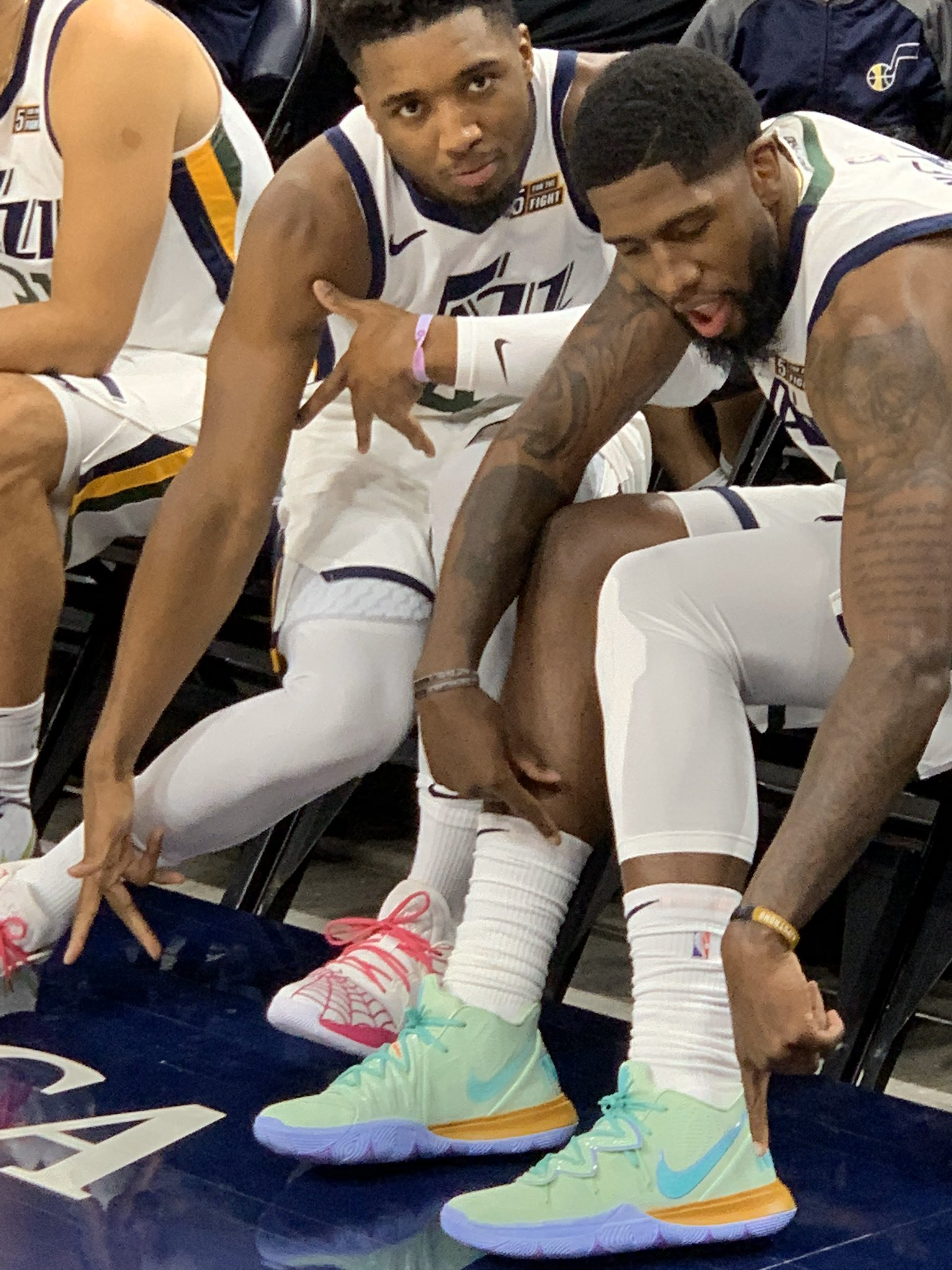Why NBA Players Don’t Wear High-top Shoes (7 Reasons)
Ever wondered why NBA players don’t wear high-top shoes anymore? Why did the trend shift from the iconic high-top sneakers to low-profile alternatives? The evolution of basketball footwear has sparked debates. Do high-tops hinder performance or is it a stylistic shift?
Join us as we explore the intriguing phenomenon: Why NBA players don’t wear high-top shoes, unraveling the reasons behind this transformative choice in the dynamic world of basketball fashion and functionality.
Why NBA players don’t wear high-top shoes? Remember the iconic image? An NBA player, defying gravity in their sky-high sneakers, the laces like wings propelling them towards the rim. But hold on – that image might be fading faster than a missed free throw.
In recent years, a revolution has been brewing on the hardwood: NBA players are trading in their ankle-embracing boots for the liberating feel of low-tops. Why this seismic shift? Why are the NBA pros ditching tops for a seemingly lighter, freer approach? Buckle up, ballers, because we’re about to dunk this mystery right out of the park.
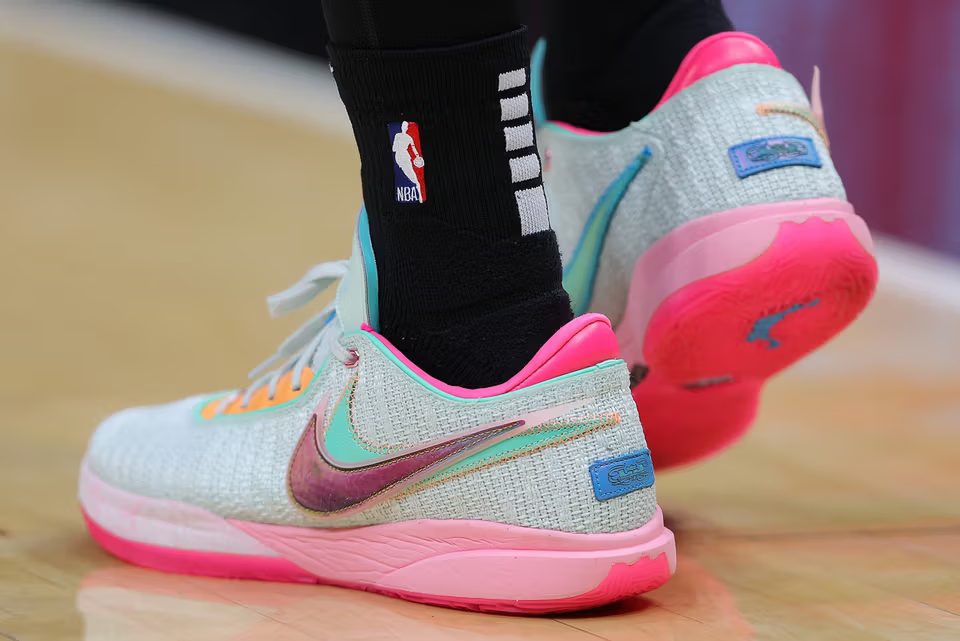 |
| NBA player on a high top shoe – Basketballxpress.com |
First, let’s address the elephant in the room:
Why wear high-top shoes?
Traditionally, high-tops were revered for their ankle support, a crucial shield against the game’s unforgiving twists and turns. But here’s the twist: advancements in shoe technology have rendered that argument a jump shot away from retirement. Cutting-edge materials and innovative support systems now equip low-tops with the same, if not better, protection, without the weight and bulk. So, the question isn’t just why no tops, but why ‘still’ tops?
The answer lies in a kaleidoscope of factors, from the evolving pace of the game to the personal preferences of the players themselves. Stay tuned, because in the next part, we’ll dissect these reasons like a coach breaking down game film. We’ll explore the allure of agility, the newfound court feel, and the surprising role of fashion in this footwear phenomenon. Get ready to see why, for many NBA stars, going low is the new going up.
when did basketball players stop wearing high tops
For decades, in the 20th century, high top basketball shoes with ankle-hugging collars were the image of NBA footwear. Icons like Michael Jordan soared in his Air Jordans, and legends like Hakeem Olajuwon dominated in his iconic high-top signature shoes.
But in recent years, by the late 1970s, the NBA landscape has shifted, and low-top sneakers have taken center court.
Since then, low-tops have surged in popularity. Nike gave it a boost by releasing low-tops as part of its Nike Zoom Kobe line in 2008, and with the boost from the Los Angeles Lakers superstar’s endorsement, low-tops have since surged in popularity. Players cite greater freedom in movement with low-top shoes.
Let’s explore the reasons behind this fascinating evolution in basketball footwear.
Read more…
- Can you wear basketball shoes for volleyball?
- Player 1 Shoes Review
- Best Basketball Shoes for Ankle Support-2023
- Yeezy 500 review
- Best Outdoor Basketball Shoes
- Crossover Culture Basketball Shoes in 2024 (TOP 10)
Did NBA Ban High Tops?
The NBA has never implemented a general ban on high-top shoes. However, there have been specific instances where certain high-top models were temporarily prohibited due to concerns about unfair competitive advantages or potential safety hazards. Why NBA players don’t wear high tops shoes? Uncover the secrets behind NBA’s footwear choices.
Explore the reasons why NBA players prefer low tops. Discover more here. Here’s a breakdown:
Nike Air Jordan 1 (Black and Red)
In 1984, Michael Jordan’s iconic “banned” Air Jordan 1s raised eyebrows with their bold color scheme and high price tag. While not technically banned for on-court performance, the NBA enforced a $5,000 fine for every game players wore them, effectively halting their use until the following season.
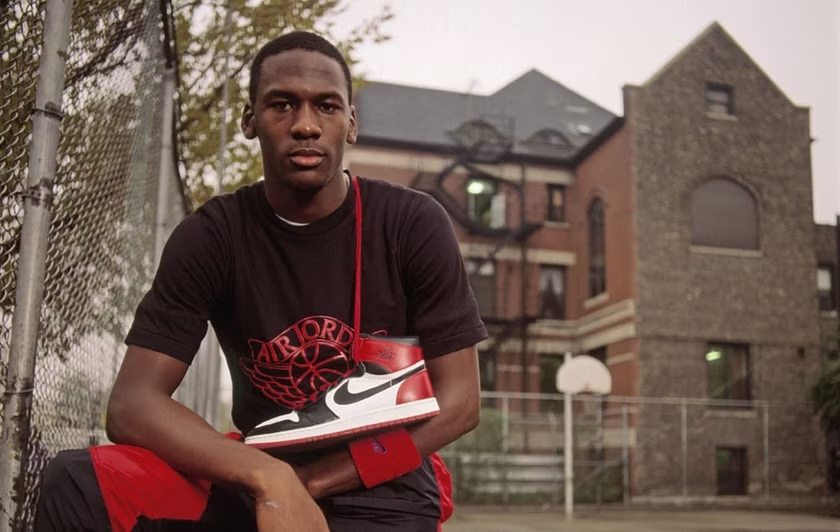 |
| When Michael Jordan’s shoes were banned by the NBA, costing him $5,000 every game he wore them |
Athletic Propulsion Labs Concept 1
In 2010, this shoe caused a stir with its “Load ‘N Launch™ Technology,” claimed to enhance vertical jump performance. The NBA deemed it potentially unfair and banned the shoe before the season began.
Converse Chuck Taylor All-Stars
While often associated with classic high-top basketball shoes, Converse All-Stars were never banned by the NBA. They were simply overshadowed by newer, more technologically advanced footwear as the league evolved.
Current Landscape
Today, high-top basketball shoes are still commonly worn by NBA players, alongside low-tops. The choice generally comes down to personal preference, playing style, and comfort. Some players, like Giannis Antetokounmpo, favor the extra support and stability of high-tops for their powerful post moves, while others, like Damian Lillard, prefer the agility and freedom of movement offered by low-tops. Ultimately, the NBA encourages freedom of expression through footwear, as long as the shoes meet safety and performance regulations. So, while certain high-top models have faced temporary bans in the past, the overall trend in the league remains diverse and driven by individual player preferences.
7 Reasons Why NBA Players Don’t Wear Tops
The image of an NBA player soaring through the air, gravity-defying in their high-top sneakers, is etched in basketball history. But in recent years, a shift has been brewing. More and more NBA stars are trading in their ankle-embracing boots for the freedom and flexibility of low-tops. This trend has sparked debate and curiosity: why are the pros ditching the iconic high-tops? While nostalgia and tradition might have us clinging to the image of the classic high-top, several compelling reasons explain the NBA’s low-top revolution:
1. Enhanced Agility and Speed
Low-tops offer a lighter, more flexible feel compared to their high-top counterparts. This translates to quicker cuts, sharper changes of direction, and explosive bursts of speed, crucial for navigating the fast-paced, dynamic game of modern basketball. Players like Stephen Curry and Damian Lillard, known for their lightning-fast dribbling and acrobatic layups, often credit low-tops for their agility on the court.
2. Improved Court Feel
Low-tops bring players closer to the ground, enhancing their connection with the court. This heightened proprioception allows for better control over footwork, leading to more precise cuts, sharper stops, and better overall balance. Kyrie Irving, known for his mesmerizing ball handling, is a vocal advocate for low-tops, attributing his footwork finesse to the close-to-court feel they provide.
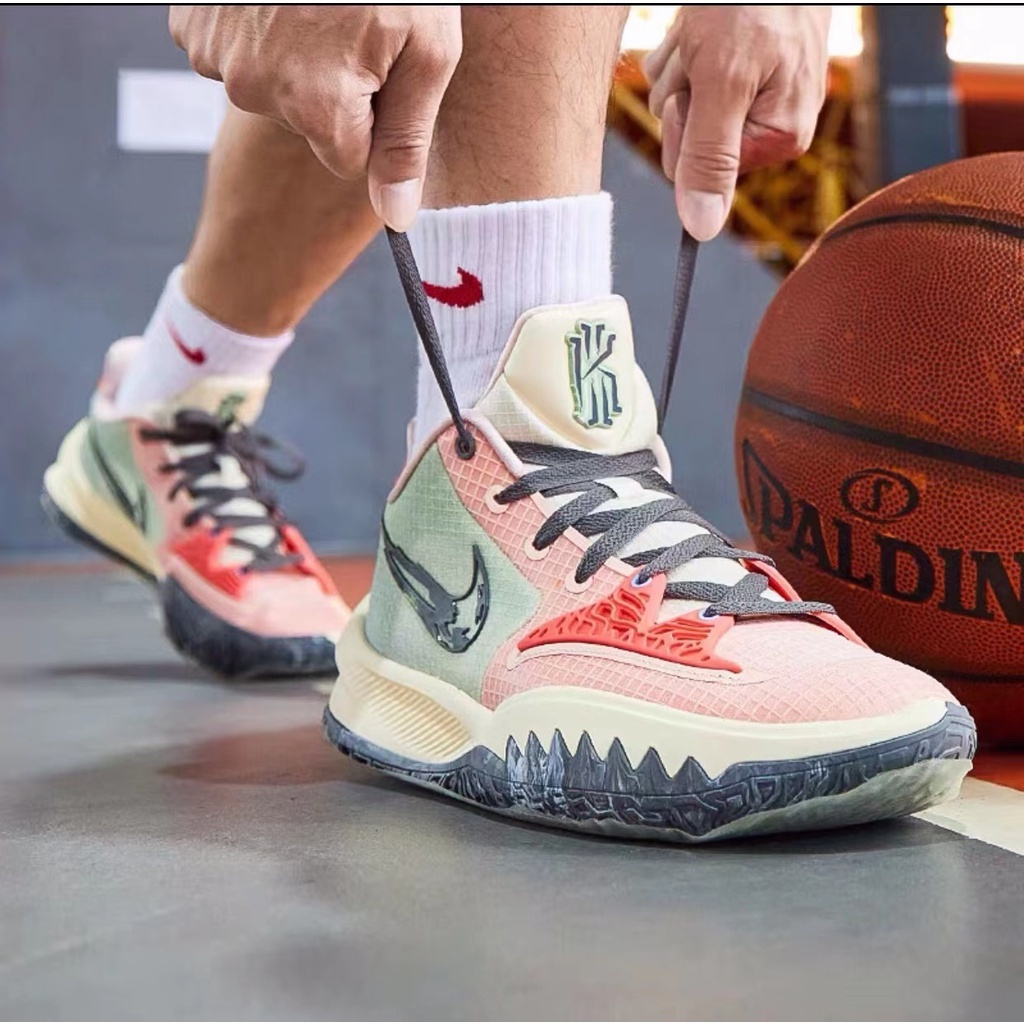 |
| [Image of Kyrie Irving wearing low-top basketball shoes] |
3. Reduced Weight and Bulk
High-tops, with their additional material and ankle support, can weigh down players. Low-tops shed this excess baggage, leading to a lighter, more streamlined feel. This reduction in weight can be particularly advantageous for guards and wings who rely on quickness and explosiveness. Players like Ja Morant and Jayson Tatum, known for their high-flying dunks and acrobatic finishes, often cite the weight advantage of low-tops as a contributing factor to their aerial prowess.
4. Evolving Ankle Support Philosophy
Traditionally, high-tops were touted for their ankle support. However, modern advancements in shoe technology have made low-tops just as supportive, if not more, in some cases. Additionally, the notion that high-tops prevent ankle sprains has been challenged by research, suggesting that ankle strength and conditioning play a more significant role. Players like Damian Lillard have openly stated that ankle support improvements in low-tops have made them comfortable making the switch.
5. Personal Preference and Comfort
Ultimately, shoe choice boils down to personal preference and comfort. Some players simply prefer the feel and freedom of movement offered by low-tops. This preference can be influenced by individual foot shapes, playing styles, and even past experiences with injuries. Stars like Giannis Antetokounmpo and Joel Embiid, known for their powerful post moves and physical play, often opt for high-tops for the additional support and stability they provide.
6. The Influence of Fashion and Signature Shoes
The rise of low-tops in the NBA can also be attributed to the increasing influence of fashion and signature shoe deals. Many popular player signature shoes are designed as low-tops, aligning with current fashion trends and offering a sleek, modern aesthetic. This, coupled with lucrative endorsement deals, incentivizes players to wear their own brand’s shoes, which often lean towards the low-top style.
7. Technological Advancements and Improved Materials
Technological advancements in shoemaking have played a crucial role in the rise of low-tops. Lightweight, breathable materials, coupled with innovative cushioning and support systems, have made low-tops just as supportive and protective as their high-top counterparts. This has given players the confidence to embrace the agility and freedom of movement offered by low-tops without compromising on protection. Why NBA players don’t wear high tops shoes? Uncover the secrets behind NBA’s footwear choices. Explore the reasons why NBA players prefer low tops. Discover more here.
Individualized Training and Injury Prevention
The NBA has evolved into a league that prioritizes player health and conditioning. With personalized training regimens and cutting-edge injury prevention programs, players are becoming more adept at strengthening their ankles and conditioning their bodies to withstand the rigors of the game. This reduced reliance on high-tops for ankle support allows players to prioritize the benefits of low-tops.
The Changing Pace and Style of Play
The modern NBA is faster, more dynamic, and less reliant on physical play compared to eras dominated by high-tops. This shift in playstyle favors the agility and speed offered by low-tops, further incentivizing players to make the switch. Players like Trae Young and Luka Doncic, known for their playmaking skills and quick
The Reign of the High Top
Traditionally, high-top sneakers were preferred for their perceived superior ankle support and stability. The extended collars wrapped around the ankle joint, potentially reducing the risk of sprains and rolls. This was particularly important for explosive athletes making quick cuts and changes of direction. Additionally, high tops offered a sense of protection against accidental stomps and collisions on the crowded court.
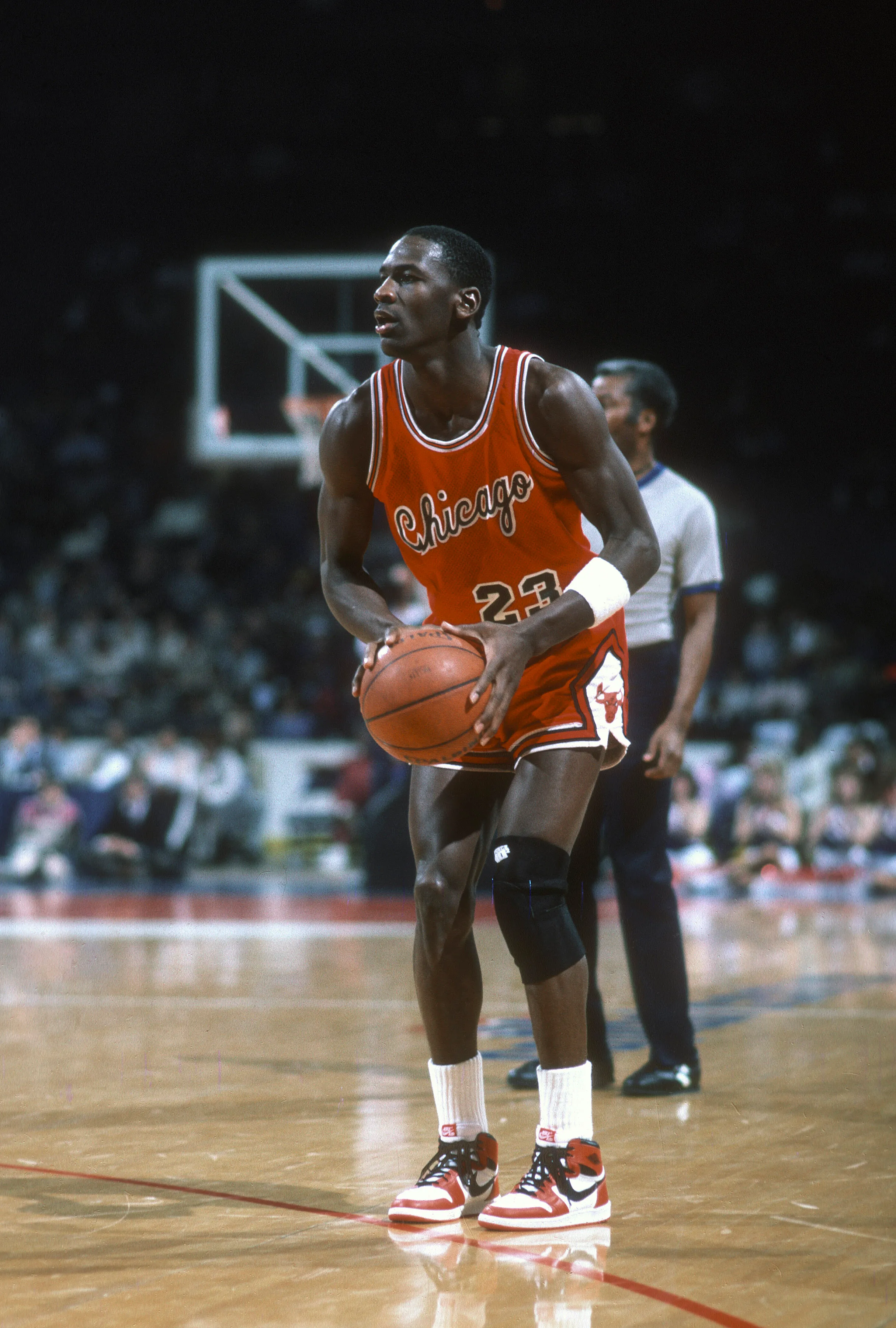 |
| Michael Jordan wearing Air Jordans |
The Rise of the Low Top
However, the tide began to turn as technology and athletic training advanced. Modern basketball shoes, regardless of height, incorporate sophisticated materials and engineering to provide excellent support and stability. Additionally, players are now emphasizing agility, speed, and court feel, attributes that some felt were hindered by the bulkier high tops.
Low-top sneakers offer several advantages in this regard:
- Lightweight: They are lighter and more flexible, allowing for quicker cuts and explosive movements.
- Enhanced Court Feel: The lower profile provides a closer connection to the court, improving proprioception and balance.
- Improved Agility: The increased ankle mobility allows for sharper changes of direction and faster footwork.
- Personal Preference: Ultimately, some players simply prefer the feel and aesthetic of low-top shoes.
Stars Leading the Charge
Several prominent NBA players have championed the low-top trend. Stephen Curry, known for his lightning-fast dribbling and pinpoint shooting, is a vocal advocate for low-top sneakers. His signature Under Armour Curry shoes are a testament to the success of this style. Other stars like Damian Lillard, Kyrie Irving, and Ja Morant have also embraced the low-top movement, showcasing its effectiveness on the highest stage.
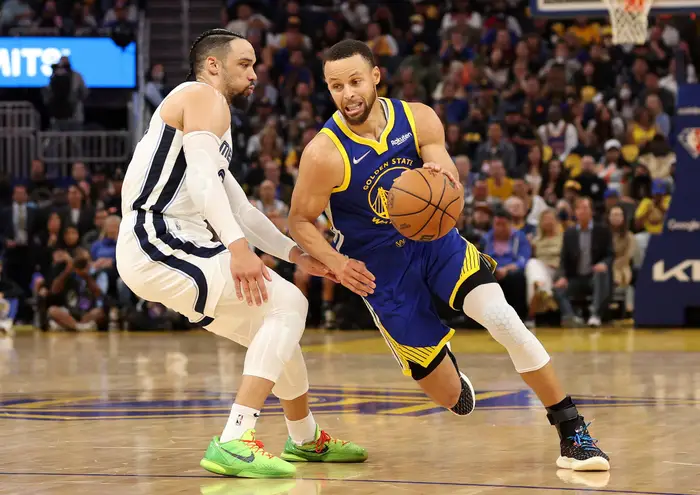 |
| Stephen Curry wearing Under Armour Curry shoes |
Is the High Top Extinct?
While low-tops are undoubtedly gaining popularity, high-tops haven’t vanished entirely. Players with a preference for the traditional support and protection, or those with a history of ankle injuries, may still opt for them. Additionally, some signature shoes, like LeBron James’ Nike LeBrons, retain the high-top design due to their unique features and aesthetics.
The Future of Basketball Footwear
The future of basketball footwear likely lies in continued innovation and personalization. Manufacturers are constantly pushing the boundaries of technology, creating shoes that are lighter, stronger, and more responsive than ever before. Players will increasingly prioritize shoes that cater to their individual playing style and preferences. Whether it’s high-top, low-top, or something entirely new, the future of NBA footwear promises to be exciting and dynamic.
Conclusion
Why don’t NBA players wear high-top shoes? Despite their iconic status in basketball culture, the trend has shifted. Practicality reigns supreme as players prioritize agility and lightweight footwear for optimal performance. The era of high-tops seems to have faded, leaving fans wondering: Why NBA players don’t wear high-top shoes? The answer lies in the evolving demands of the game, favoring speed and maneuverability over tradition. In today’s NBA, the high-top phenomenon is a nostalgic echo, a stylistic choice lost in the pursuit of on-court excellence.
The shift from high-tops to low-tops in the NBA is a fascinating story of player preference, technological advancement, and evolving priorities in the game. While the debate between high and low may continue, one thing is certain: the quest for the perfect basketball shoe will never stop, driven by the relentless pursuit of athletic excellence and personal expression on the court.

